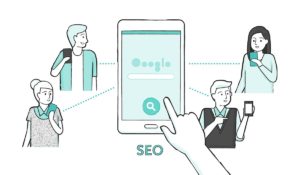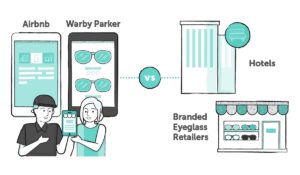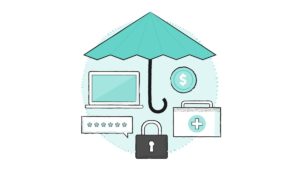
Frequency creates habit which creates loyalty which creates profit. Uber and Lyft are successful because consumers need to get from A to B multiple times a day, forming habits that lead to long (and high!) lifetime values. Grubhub similarly benefited from people eating more than once per day.
But there aren’t that many business opportunities that have daily — or even weekly — frequencies. And those spaces have become very competitive. For example, how many food delivery companies can you name? Now add in groceries or meal kit cooking companies. All that just for the “eating” use case.
What if the natural frequency of use for a transactional business is low, like buying a house, selling a car, or booking a trip? How do you create a successful business if ideal frequency is quarterly or yearly or even once every few years? You would be unlikely to create a habit or loyalty, much less get the customer to remember your brand name. That is usually the case. If you don’t create loyalty, then you usually have re-acquire consumers when the need eventually arises again. This hurts customer acquisition costs and lifetime value. This fact makes building a successful business with low frequency extremely difficult.
With a low frequency business, you usually need to have a high average selling price to make up for the lack of frequency. While an order on Grubhub may cost you only $25, the average transaction size on Airbnb is hundreds of dollars. But a high average selling price alone is not enough to become a massively successful business. I’ve seen four distinct strategies for how to thrive in low frequency marketplaces. They all revolve around being top of mind when the transactional need occurs, no matter how infrequent that need is. I’ll start by talking about the most common approach, and then lead into some that are actually more valuable and defensible.
The Expedia Model (AKA SEO)
Companies that pursue this model: Thumbtack, Expedia, Apartments.com, WebMD

My first job was at Apartments.com. We were a classic low frequency marketplace. People search for apartments at most once a year, and there isn’t a whole lot of value you can provide in between apartment searches. So what did we do at Apartments.com? If you do not create habits or loyalty with initial use, users go back to the original way they solved the problem last time. Where do people go where they are searching for help renting an apartment? Usually, Google. So, the Apartments.com strategy was to rank well organically on Google so when people did search again for an apartment, they’d be likely to see us and use us for their search again.
SEO can be a very successful strategy, but the entire company has to be geared around success on Google. This strategy is also susceptible to platform shifts, like Google algorithm changes or Google deciding to compete with you. It also tends to shift companies toward portfolio models at scale. This is why Expedia owns Hotels.com, Orbitz, Hotwire, Travelocity, and Trivago, and why Priceline owns Booking.com and Kayak. When you rank #1 for your main keywords, the only way to grow is to own the #2 and #3 spots as well.
The Airbnb Model (AKA Better, Cheaper)
Companies that pursue this model: Airbnb, Rent The Runway, Poshmark

Sarah Tavel wrote a post about products that are 10x better and cheaper than their alternatives. You can definitely pursue this strategy even if you have low frequency. Airbnb was significantly cheaper than hotels, and many people, once they experienced Airbnb, found it a better experience as well. It was a more unique listing, in a “more real” part of the city, and they had a connection to a local. So, even though people only travel once or twice a year on average, when they do, they remember the Airbnb experience and start there directly instead of on Google, competing with the SEO behemoths of Expedia and Priceline.
Finding this level of differentiation in different industries is not easy, but worth contemplating. Airbnb is not the only startup that has entered a crowded space and grown rapidly by figuring out how to be 10x better and cheaper. RentTheRunway allows you to access high quality fashion without the high price, and without storing it, because dressing up is increasingly a low frequency occurrence.
The HotelTonight Model (AKA Insurance)
Companies that pursue this model: HotelTonight, One Medical, Lifelock, 1Password

There are certain businesses that are needed infrequently, but when they are needed, they are needed with great urgency. Example spaces include urgent care, being stuck in a random city unexpectedly, and fraud alerts. The key here is that someone keeps the app or account live despite a lack of usage because the fear of when it might be needed is so great. This is a hard strategy to pursue, but once the value prop is established, these companies remain sticky despite their lack of frequency.
The Houzz Model (AKA Engagement)
Companies that pursue this model: Houzz, Zillow, CreditKarma

Contrary to what many might think, keeping users engaged in a low frequency business is indeed possible: the key is a non-transactional experience. Many of these approaches have a “set and forget” component to them where they reach out with pertinent information in a more frequent way. Zillow is the first example I can remember that utilized this strategy. Even when not actively looking for houses to buy, Zillow kept users engaged by valuing their existing homes via the zestimates. CreditKarma reaches out with alerts and monthly credit check updates.
Houzz is a great example that is more recent. People remodel and redecorate their homes infrequently, but they are inspired more regularly. Houzz has a great product that shows home inspiration that can be saved and discussed, and when needed, but much more rarely, transacted.This is a product people engage directly with in instead of having to have content pushed to them
For this strategy to work, you essentially build a second product that enables frequent engagement — not a transactional product. Engagement strategies for low frequency marketplaces take advantage of an inherent human desire to stay up-to-date on things important to them. This won’t work for all industries. We actually tried this at Apartments.com, but were not successful because renters don’t care as much about investing in their living situation as homeowners.
A common confusion is that loyalty programs are an example of this. What loyalty programs usually do is increase frequency or target users that have high category frequency, like business travelers in the travel segment, rather than create loyalty from infrequent users. It is still a very valuable strategy, and I have blogged about loyalty programs if you want to learn more.
—
Of the four models I wrote about above, you will notice that not one of these is a brand model. Many of the sites listed in the SEO model have spent hundreds of millions of dollars building brands. Yet most travel searchers still start with Google. Brand is an extension of the Airbnb model, not its own strategy. If the product doesn’t deliver on a differentiated experience, brand building usually does not create loyalty.
So, if you’re building a low frequency business, do not dismay. There are many paths to still becoming a very large and differentiated business. These strategies are difficult but very rewarding if they are executed well.
Currently listening to Take Me Apart by Kelela.


